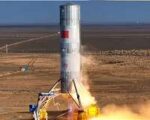At the Association of the United States Army (AUSA) 2025 Annual Meeting in Washington D.C., General Dynamics Land Systems (GDLS) revealed the latest evolution of its Multi-Utility Tactical Transport (MUTT) platform — designated XM1211 — configured for counter-unmanned aerial system (C-UAS) operations. The new variant reflects a growing emphasis on modular unmanned ground vehicles (UGVs) capable of supporting short-range air defense (SHORAD), electronic warfare (EW), and multi-domain operations.
XM1211 MUTT: From Logistics Mule to Armed C-UAS Platform
The XM1211 is a tracked version of GDLS’s established MUTT family — an expeditionary robotic platform originally designed to support infantry units by transporting gear or acting as a mobile power source. The new configuration shifts the platform toward a more combat-oriented role, integrating advanced sensors and effectors tailored to detect and defeat Group 1–3 drones.
Key features of the XM1211 include:
- Tracked mobility: Enhanced terrain access over wheeled variants.
- Modular payload architecture: Supports rapid reconfiguration for kinetic or non-kinetic missions.
- Autonomous navigation: Includes follow-me mode and GPS-denied navigation options.
- C-UAS suite: Includes radar detection, EO/IR tracking, and soft-kill/hard-kill effectors.
The vehicle’s low profile and quiet electric drive make it suitable for forward deployment in contested environments where small UAS threats are prevalent. It can be remotely operated or semi-autonomous depending on mission requirements.
Counter-Drone Payloads: Soft-Kill and Hard-Kill Options
The XM1211 was showcased at AUSA with multiple interchangeable payloads focused on drone defense. These included both soft-kill systems such as RF jammers and directional EW antennas, as well as hard-kill launchers for loitering munitions or proximity-fused projectiles. While GDLS did not disclose full specifications at the show, open-source imagery and interviews suggest integration with third-party C-UAS modules from partners like Liteye Systems or Anduril Industries is possible.
Potential effectors include:
- RF jammer arrays: To disrupt drone command-and-control links or GNSS signals.
- EO/IR sensor mast: For visual tracking and target classification.
- 30 mm chain gun turret or remote weapon station (RWS): For kinetic engagements against low-altitude drones or ground threats.
- Tethered UAV launcher: For persistent surveillance or relay missions in support of air defense targeting.
This modularity aligns with U.S. Army interest in scalable C-UAS solutions that can be deployed at echelon — from platoon-level protection to base perimeter defense. The XM1211 offers a compact alternative to larger SHORAD platforms like Stryker M-SHORAD while remaining deployable by tactical transport vehicles such as JLTVs or CH-47 helicopters.
Tactical Role within Army Multi-Domain Operations Doctrine
The U.S. Army’s evolving Multi-Domain Operations (MDO) doctrine emphasizes dispersed formations supported by autonomous systems across land, air, cyber, space, and electromagnetic domains. The XM MUTT family — particularly in its armed configurations — is positioned to serve as a forward-deployed sensor-effector node within this framework.
In defensive roles:
- The XM1211 can patrol perimeters autonomously while scanning for aerial threats using onboard radar/EO sensors.
- If integrated into a wider C4ISR network via Link-16 or other tactical data links, it could cue manned SHORAD assets like Avenger teams or NASAMS batteries.
In offensive roles:
- The platform could accompany dismounted infantry during urban operations to provide overwatch against FPV drones or quadcopters dropping munitions — a tactic increasingly seen in Ukraine and Gaza theaters since late 2023–2024.
The ability to operate semi-independently in GPS-denied environments adds significant value for expeditionary forces operating under electronic warfare conditions. GDLS has hinted at future AI-enabled autonomy upgrades that would allow threat classification onboard without operator input — though these remain under development as of Q4 FY25.
MUTT Program Evolution and Procurement Outlook
The original MUTT program traces back over a decade when GDLS competed under the Squad Multipurpose Equipment Transport (SMET) initiative. In FY2019–FY2020 trials at Fort Benning demonstrated early prototypes carrying gear alongside infantry squads. Since then, DoD interest has shifted toward arming UGVs with lethal/non-lethal payloads amid rising drone threats globally — particularly after lessons learned from Ukraine-Russia conflict post-2022 invasion where FPV drones caused significant attrition among armored units lacking organic C-UAS coverage.
The U.S. Army has not formally announced procurement quantities for the XM1211 variant but has included robotic combat vehicles (RCVs) in several modernization roadmaps including Project Convergence experiments. The Office of the Secretary of Defense’s FY2026 budget request includes $93 million earmarked for autonomous ground systems R&D across services — some of which may fund further testing of platforms like the XM MUTT series under PEO Ground Combat Systems oversight.
Industry Partnerships and Export Potential
GDLS has not yet confirmed international customers for the XM1211 but has indicated interest from NATO allies seeking mobile C-UAS platforms below brigade level. Countries such as Poland, Estonia, and Norway have all expressed public concern over drone swarms targeting logistics nodes near frontlines — making compact robotic defenders attractive additions to layered air defenses already fielding NASAMS or IRIS-T systems.
If interoperability standards such as STANAG-compliant data buses are adopted into future models, export potential could increase significantly across Europe and Asia-Pacific partners facing similar UAV saturation threats from state/non-state actors alike. Integration with NATO Battle Management Systems is likely being explored through cooperative R&D channels such as DIANA or OCCAR frameworks post-AUSA showcase events in October 2025.
Conclusion: Compact Battlefield Autonomy Meets Drone Defense Imperative
The unveiling of the XM1211 MUTT at AUSA underscores how rapidly unmanned ground vehicles are transitioning from logistics support tools into frontline combat enablers tailored for emerging aerial threats. With its modular payload design focused on counter-drone roles but adaptable for broader ISR/EW missions, the platform reflects both doctrinal shifts within U.S./NATO forces and technological convergence between robotics and force protection requirements on tomorrow’s battlefield. Whether it will enter serial production depends on upcoming field trials—but its relevance is already clear amid proliferating drone warfare trends worldwide.










